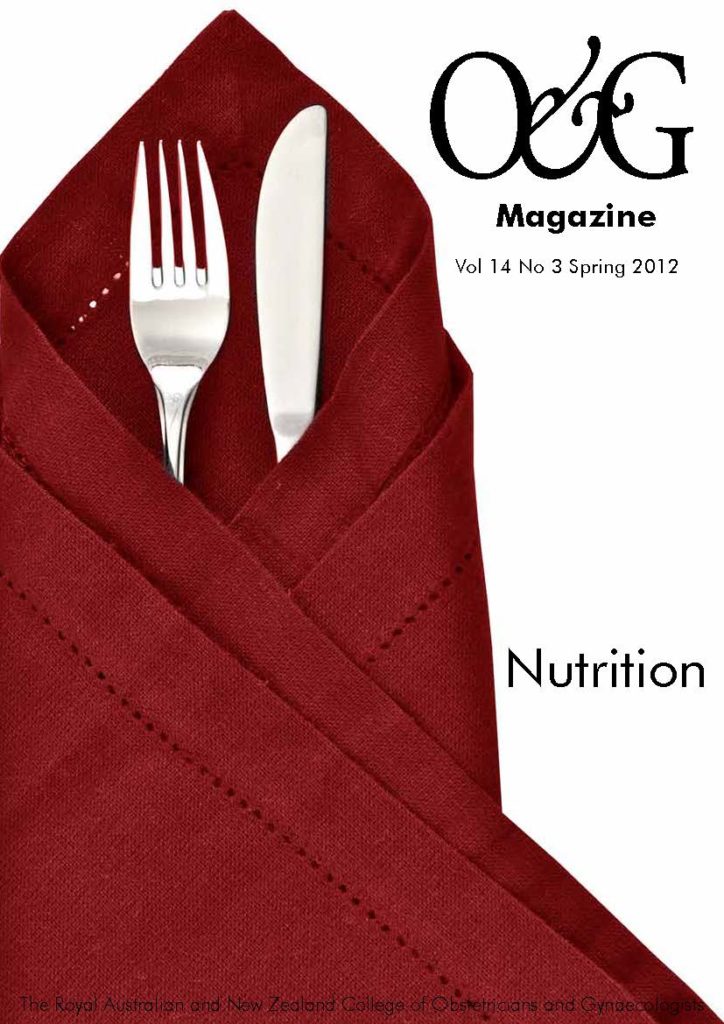Collaborative Care Agreements, privately practising midwives and obstetricians: where to from here in the Australian maternity system?
It is now some 18 months since the framework setting in place Commonwealth Government support for midwifery care was finalised. Eligible midwives have had access to Medicare Benefits Scheme (MBS) and Pharmaceutical Benefits Scheme funding and professional indemnity insurance cover for care they provide pregnant women since December 2010, potentially increasing access for women seeking care from privately practising midwives (PPMs). Continuity of care by a midwife throughout pregnancy and labour is highly valued by women who receive it, in the same way as women value continuity of care by an obstetrician. It follows that collaborative care from both a midwife and obstetrician known to the woman is likely to provide the ‘gold standard’ in care when that can be arranged. Such collaboration is evidenced by a Collaborative Care Agreement (CCA), which defines and documents the relationship between two otherwise independent practitioners.
I have been fortunate to have discussed and agreed Collaborative Care Agreements with five midwives and have provided care collaboratively for pregnant women with three of them. In all cases, the continuity of both midwifery and obstetric care led to a high level of care and satisfaction for the women giving birth.
However, significant barriers remain, as evidenced by a relatively low level of endorsement of eligible midwives by the Nursing and Midwifery Board and occasions of service. As of April 2012, there were 185 endorsed eligible midwives in Australia, with 157 of those in Queensland. The process of endorsement is slow and cumbersome. A midwife I know with over 25 years of continuous experience across the spectrum of antenatal, intrapartum and postnatal care applied for endorsement and the process took more than ten months to complete. MBS statistics show that although claims were made for 1215 first antenatal attendances and 10 737 subsequent antenatal consultations with eligible midwives from December 2010 to June 2012, only 55 claims were made for management of labour and delivery in the same period. Furthermore, 46 of those claims were from Queensland and the remaining nine were from New South Wales.
PPMs, as yet, do not have any systematic arrangements for credentialing and appointment to maternity units. This is a significant barrier to provision of MBS-funded care for labour and birth, as without it midwives must formally handover care of women in labour to maternity unit staff, and can only subsequently remain present as a support person. Without such credentialing in place, it is difficult for obstetricians to consider collaborative agreements with PPMs. Indeed, the two midwives with whom I have provided care collaboratively for women in labour are employees at the public hospital where the women give birth, allowing them to provide care for those women. However, those women are formally admitted under my care; those midwives are remunerated as hospital employees and therefore cannot access MBS benefits for their care during labour and delivery.
So the lack of a national or even state-wide system of credentialing of PPMs remains an issue to be resolved and, though jurisdictions are working on this, little progress has been seen to date.
It is also disturbing to hear from some PPMs that they have experienced difficulty in discussing CCAs with obstetricians. Often the decline of a request to discuss a CCA is based on lack of credentialing of the PPM at a maternity unit. On occasions the request is declined because a lack of agreement on a model of care (for example, request for collaboration for homebirth where the obstetrician does not wish to incorporate such a model into his/her practice).
However, I am also told that on several occasions the request for discussion of CCA is flatly rejected without any attempt at discussion. Given the low number of eligible midwives who are in a position to discuss Collaborative Care Agreements with obstetricians, it is impossible to predict whether such reported reluctance is likely to be a barrier to collaborative care in the future. A recent survey by the National Association of Specialist Obstetricians and Gynaecologists revealed 70 per cent of responding specialist obstetricians revealed they would consider CCAs with midwives if approached. This is a positive sign, but remains to be reflected in practice.
Conversely, I have am aware that some midwives have declared they will never consider discussing Collaborative Care Agreements with obstetricians, claiming that this compromises their professional independence. Of course this is true, but no more so than the independence obstetricians and midwives relinquish when they agree to work within policies and procedures of the hospitals in which they provide care for women on a daily basis.
It would be a lost opportunity if the failure of PPMs to discuss and conclude Collaborative Care Agreements with obstetricians led to a move away from collaborative care, regardless of which party’s reluctance is responsible. Without a doubt, the expectation of many women and midwives that continuity of care from midwives should be facilitated will continue. Continuity of care models are developing in the public maternity system and it is logical that the private sector should provide such a model of care as well. Currently, regulations make provisions for CCAs between midwives and delegated medical practitioners in hospitals, and it is likely that such agreements with institutions will increasingly be used if the lack of individual CCAs remains a barrier to women accessing MBS-funded midwifery care.
CCAs are an opportunity to move away from the ‘us versus them’ mentality that unfortunately some obstetricians and midwives have held in the past toward a truly collaborative effort in maternity care. It requires goodwill, communication and a focus on the needs of the women for whom we care to convert this opportunity into reality.






Leave a Reply